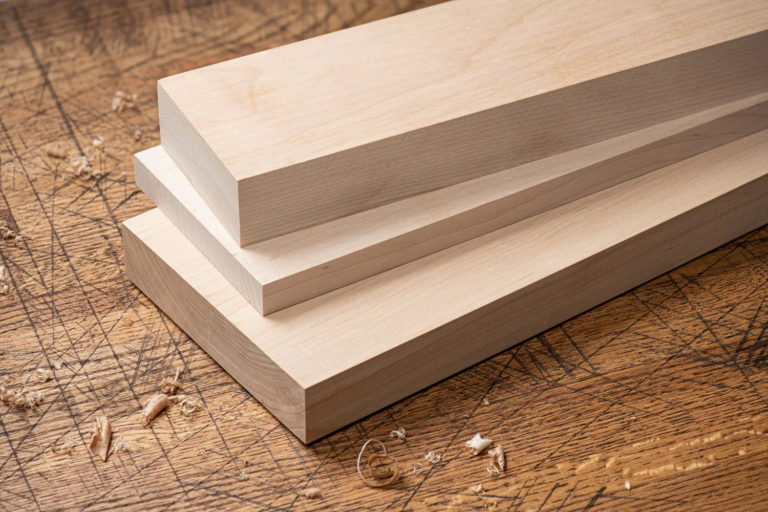Buying timber online can be a smart move — it’s convenient, often more affordable, and gives you access to a wider selection than your local builder’s merchant. But as with any online purchase, there are potential pitfalls. Timber is a natural material with variations in quality, size, and treatment, so it’s important to know what you’re getting before you click “Buy Now.”
Whether you’re sourcing wood for a DIY shed, home renovation, or garden project, here’s a breakdown of the most common mistakes to avoid when buying timber online in the UK — and how to shop smart.
1. Not Understanding Timber Grades
One of the most overlooked mistakes is ignoring timber grading. Timber is graded based on quality, strength, and appearance. If you don’t check the grade, you might end up with wood that’s unsuitable for your project — either structurally weak or full of knots and splits.
Common UK timber grades:
- C16: Suitable for general construction, cost-effective, but may have more visual defects.
- C24: Higher grade with better strength and appearance; ideal for load-bearing structures.
- Joinery Grade: Typically used for visual or decorative applications.
Tip: Always check the product description and confirm the grade matches your project needs — especially for framing or structural work.
2. Confusing Treated vs Untreated Timber
Many DIYers order untreated timber without realising it’s not suitable for outdoor use. Treated timber has been infused with preservatives that resist rot, insects, and moisture — making it essential for anything exposed to the elements.
Using untreated timber for garden structures, fencing, or shed bases will almost always lead to premature decay.
Tip: For outdoor or ground-contact applications, always choose pressure-treated timber. For interior work, untreated or kiln-dried timber may be sufficient.
3. Ignoring Actual Dimensions vs Nominal Sizes
Online listings often use nominal sizes (e.g., 2×4), which refer to rough-sawn dimensions before the wood is planed. The actual size is usually smaller once finished.
For example:
- A nominal 47mm x 100mm timber might actually measure around 45mm x 95mm.
Ordering based on incorrect measurements can throw off your entire project plan.
Tip: Always double-check both nominal and finished dimensions in the product description before ordering — especially if accuracy is critical.
4. Not Accounting for Waste or Off-Cuts
It’s easy to calculate the exact number of timber boards you need, but real-world building rarely goes perfectly to plan. Cuts, mistakes, and off-cuts are all part of the process.
Ordering too little timber means delays and extra delivery fees. Ordering too much can lead to storage issues or unnecessary costs.
Tip: Add 10–15% extra to your order to account for waste, mistakes, or changes mid-project.
5. Overlooking Moisture Content
Timber naturally contains moisture. If it’s not dried to the right level, it can warp or crack as it adjusts to your environment. This is especially important for interior projects like flooring or furniture.
- Kiln-dried timber is dried to a consistent, low moisture level — ideal for interior use.
- Green or wet timber is freshly cut and more prone to shrinkage or warping.
Tip: For indoor use, always buy kiln-dried timber. For outdoor builds, pressure-treated softwood is usually fine, even with higher moisture content.
6. Choosing Based on Price Alone
We all love a good deal, but timber quality can vary significantly between suppliers. Cheap timber might be:
- Poorly stored (causing warping or mould)
- Inconsistent in size or finish
- Lower grade than advertised
What looks like a bargain can lead to costly repairs or replacements later.
Tip: Read product reviews, check return policies, and research the supplier’s reputation. A slightly higher price from a trusted source is often worth it.
7. Not Checking Delivery Details
Timber is bulky, heavy, and sometimes long — which means delivery can be complicated. Some online suppliers only offer kerbside delivery, meaning you’ll need to move it yourself. Others may require someone present to receive the goods.
Failing to check delivery policies can result in missed shipments, extra fees, or timber left exposed to weather.
Tip: Check:
- Delivery method (kerbside, liftgate, to door)
- Required access space
- Delivery times and any added charges
- Return/refund policy for damaged or incorrect items
8. Ignoring Timber Type and Use Case
Different woods serve different purposes. Ordering the wrong species or finish can ruin your project. For instance:
- Softwood like pine or spruce is affordable and good for framing or garden use.
- Hardwoods like oak or ash are more durable and ideal for visible or high-use areas.
- Plywood, MDF, or OSB are good for internal walls, flooring, and sheathing.
Tip: Know your project and match the timber type accordingly. Don’t just choose the cheapest option — make sure it’s fit for purpose.
9. Failing to Compare Like-for-Like
When comparing timber online, make sure you’re comparing products with the same:
- Dimensions
- Treatment type
- Grade
- Species
- Finish (rough-sawn vs. planed)
Suppliers may list slightly different specs, and failing to notice those differences can mean mismatched materials when delivered.
Tip: Create a short checklist when comparing suppliers and prices — it will help you spot hidden differences quickly.
Final Thoughts
Buying timber online is fast, easy, and often more affordable — but only if you avoid common mistakes. From choosing the wrong grade to underestimating delivery details, small errors can lead to big problems later.
Take the time to understand what you’re buying, read product descriptions carefully, and always choose a reliable supplier. With a bit of knowledge and planning, you can confidently order timber online and get exactly what your project needs — on time, on budget, and without surprises.

